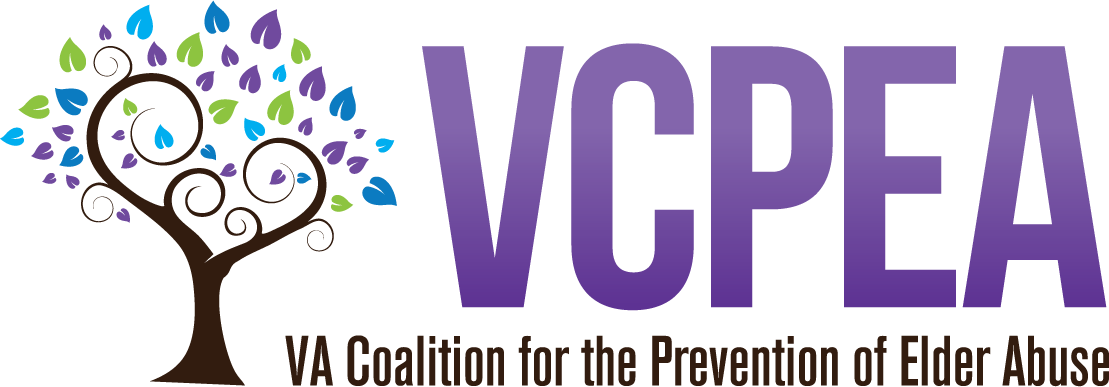
Understanding Elder Abuse
Stop Elder Abuse
To report suspected abuse, neglect, or exploitation, call your local social services or the toll-free 24-hour hotline at 1-888-832-3858.
Defining Elder Abuse:
Elder abuse “includes physical, sexual or psychological abuse, as well as neglect, abandonment, and financial exploitation of an older person by another person or entity, that occurs in any setting (e.g., home, community, or facility), either in a relationship where there is an expectation of trust and/or when an older person is targeted based on age or disability.” (Elder Justice Roadmap, 2014)
Research has shown that approximately 1 in 10 older adults living in the community will experience some form of abuse, neglect, or financial exploitation.
Elder abuse can be perpetrated by current or former spouses / dating partners; family members, caregivers, professionals, neighbors, friends, and strangers.
The Forms of Elder Abuse:
Physical Abuse: the intentional or reckless use of physical harm or physical coercion that may result in bodily injury, physical pain, or impairment. Under the Older Americans Act, ‘‘physical harm’’ means bodily injury, impairment, or disease.
Examples include but are not limited to:
Hitting, beating, pushing, shaking, slapping, kicking, pinching, and burning
Unlawful, excessive, or unnecessary use of force like restraints or force-feeding
Over-medication or under-medication
Controlling access to / breaking assistive devices (eyeglasses, hearing aids, etc.)
Sexual Abuse: non-consensual sexual contact of any kind with an older adult.
Examples include but are not limited to:
Unwanted touching, sexual assault or battery, sexual harassment
Sexual interaction with elders who lack the capacity to give consent
Taking inappropriate or intimate photos without consent
Forcing an older adult to view pornographic material
Emotional/Psychological Abuse: the infliction of anguish, pain, or distress through verbal or nonverbal acts.
Examples include but are not limited to:
Verbal assaults, insults, threats, intimidation, humiliation, isolation, and harassment
Religious abuse, such as not allowing someone to practice their religion or using their religion against them
Harming or threatening to harm pets
Neglect: the refusal or failure of a caregiver to provide proper care. The Elder Justice Act defines neglect as “the failure of a caregiver or fiduciary to provide the goods or services that are necessary to maintain the health or safety of an elder.
Examples include but are not limited to:
Not providing appropriate medical care, not renewing or administering perscriptions
Not helping with dressing, bathing, eating, etc.
Not addressing toileting needs / helping the bathroom
Locking older adult in their apartment / bedroom
Leaving older adult in same position for long periods of time
Financial: the illegal, unauthorized, or improper use of an older person’s resources for monetary or personal benefit, profit, or gain, or that results in depriving an older person of rightful access to, or use of, benefits, resources, belongings, or assets.
Examples include but are not limited to:
Misusing or stealing an older person’s money, possessions , or benefits
Coercing or deceiving an older person into signing any document such as a contract or will
Improper use of conservatorship, guardianship, or power of attorney
Self-Neglect: an adult’s inability, due to physical or mental impairment or diminished capacity, to perform essential self-care tasks.
Examples include but are not limited to:
Obtaining adequate food, water, clothing, shelter, personal hygiene, medical and mental health care, and safety precautions, and/or managing one’s finances.
The Impact of Elder Abuse:
300% higher risk of early death
Depression, anxiety, increased mental impairment
3X more likely to be admitted to the hospital
4X more likely to be admitted to a nursing home
Significant financial losses
Greater reliance on social programs
(Dong et al. 2009; Fulmer, Rodgers & Pelger, 2013; Mouton et al, 2010; Dong & Simon, 2013; National Center on Elder Abuse, 2014)
The Warning Signs of Elder Abuse:
Unexplained or untreated burns, welts, scratches, bruises, fractures, dislocations, sores, or sprains
Lacks needed dentures, glasses, hearing aids or medication
Lacks needed supervision
Malnourishment, dehydration
Mistrust of others, withdrawn from normal activities
Personal belongings missing
Property or savings mismanaged
Severe anxiety, fearfulness, depression
Sudden or frequent changes in will or power of attorney or property transfers that the adult is unable to comprehend
Unpaid bills
Home cluttered, filthy, in disrepair, has fire or safety hazards
Untreated medical conditions
Lack of basic hygiene, adequate food, or clean and appropriate clothing
Person confined to bed is left without care
Caregiver isolates adult or fails to provide for adult’s needs
Caregiver does not allow older adult to talk privately or speak for themselves
Caregiver is verbally aggressive or demeaning, controlling, overly concerned about spending money, or uncaring
Unexplained sexually transmitted diseases
